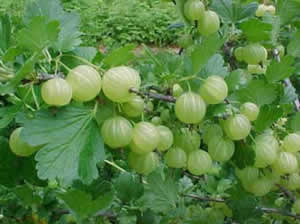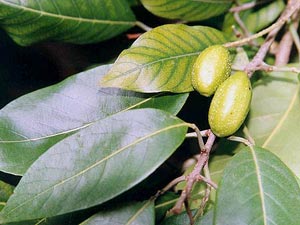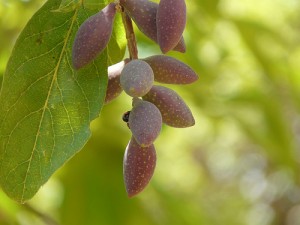![]()
Search
|
|
|
|
Normally, this formula is taken to cleanse, tonify, and regenerate the lower intestines, but the formula also works as a kind of physiological roto rooter in the arteries, often making a significant difference in circulation and vision. Triphala is not a laxative much less a purgative, but it can be bowel stimulating. Its longer term action is to promote better assimilation and elimination, thereby leading to better health. It is the best selling formula in the Ayurvedic repertoire and is balancing for all constitutional types.
In a study done of the radioprotective properties of triphala, mice were given the equivalent of 1 gram of triphala per kilogram of body weight. This would work out to about two ounces of powdered triphala for an adult weighing about 130 pounds. This dosage was administered for seven days prior to lethal full body irradiation. The triphala appeared to reduce oxidative damage to the DNA and conferred a 60% reduction in mortality. Practically speaking, the dosage is very high but for those with obstructed bowels or sluggish elimination, short-term use at these levels might be considered as prophylactic in the event of exposure to high levels of gamma radiation. Research: PubMed The aqueous extract of the fruits of Emblica officinalis (T1), Terminalia chebula (T2) and Terminalia belerica (T3) and their equiproportional mixture triphala were evaluated for their in vitro antioxidant activity. gamma-Radiation induced strand break formation in plasmid DNA (pBR322) was effectively inhibited by triphala and its constituents in the concentration range 25-200 microg/mL with a percentage inhibition of T1 (30%-83%), T2 (21%-71%), T3 (8%-58%) and triphala (17%-63%). They also inhibited radiation induced lipid peroxidation in rat liver microsomes effectively with IC(50) values less than 15 microg/mL. The extracts were found to possess the ability to scavenge free radicals such as DPPH and superoxide. Research: PubMed |
||||||||||||||
Ingredients |
||||||||||||||
Amalaki Amalaki can be found throughout South and Southeast Asia. It is sometimes called a tropical gooseberry. It is astonishingly sour and is the primary ingredient in India's two most famous herbal preparations: Chyawanprash and triphala. It is sometimes regarded as the world's richest and most stable source of vitamin C. The fruit is also a surprisingly good source of minerals and has a rather high protein content for fruit. The fruit, juice, and sediment are all antioxidant and anti-aging. The fruit is antihemorrhagic and antidiarrheal. It can be used as an eye tonic as well as liver and digestive tonic. Mixed with turmeric and honey, it is used to treat diabetes.
|
||||||||||||||
Haritaki is abundant in North India. The unripe fruits are more purgative and the ripe fruit is astringent. The powder of the ripe fruit is used to treat anemia and fevers. The antioxidant properties are higher in liquid extracts than powders. Haritaki is very popular in both Indian and Tibetan medicine. Though mainly used to purify the gastrointestinal tract, it is thought also to improve the acuity of the senses and intelligence. It is contraindicated in pregnancy. It is an antioxidant and free radical scavenger.
|
||||||||||||||
Bibhitaki is native to the deciduous forests of India. When ripe and dried, the fruit is astringent and is therefore styptic and useful in stopping diarrhea. For this purpose, the powder works best. Bibhitaki is warming and acts as an expectorant. It is used to eliminate intestinal parasites, improve vision, and reduce blood pressure. It has antihistaminic properties than help to relieve symptoms of allergies.
Copyright by Ingrid Naiman 2011. All rights reserved. No part of this page may be reproduced or published online or digitally without written permission. |
*The material provided on this site is for informational purposes only. The site owner is not a medical doctor. Information provided is not intended to replace the services of health care professionals. The content and products discussed have not been evaluated by the Food and Drug Administration. The information on this site and the products discussed are not intended to diagnose, treat, cure, or prevent any disease.



